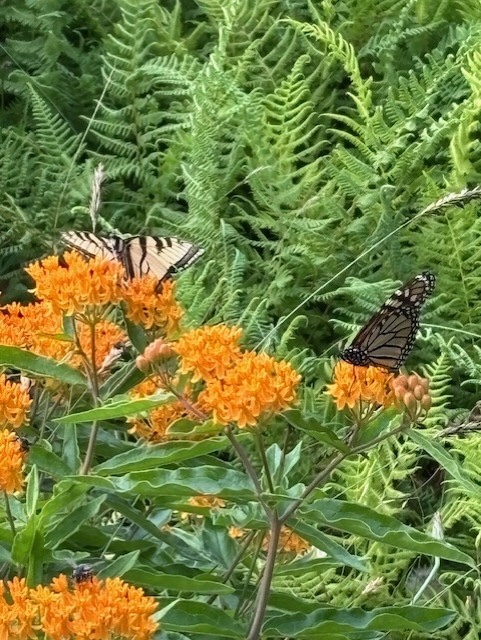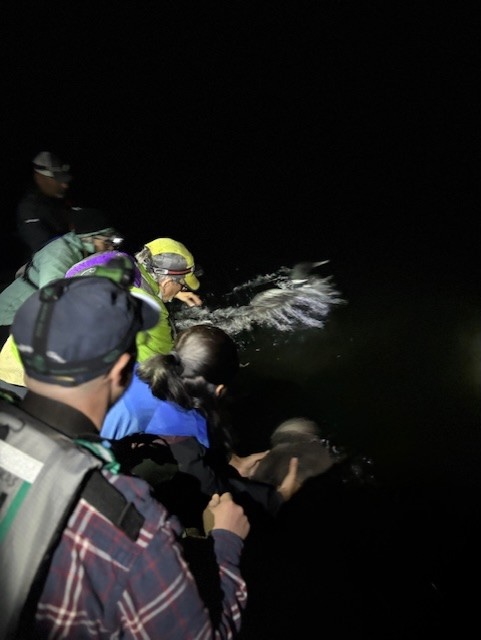
Outdoor Adventures with Gary Lee - Vol. 321
After some nice rainfall of an inch and half to two inches in some places water is again running out of the outlet of my pond. The flowers all loved it as did my veggies which are growing out of their beds behind the school. I put my gourds and small pumpkins there, where I had grown them for years at the transfer station. The leaf pile became an eatery for the deer and bear who eat everything even before they got ripe. I planted lots of flower seeds on the old dump cover to attract butterflies and bees. Not much has shown yet as with most wildflowers, they put out a whorl of basil leaves the first year and bloom for years after if the deer don’t eat them. There are many plants that deer don’t eat and some that just nibble on, daisies and black-eyed Susan’s are a couple, and most forms of milkweed are distasteful to them and good for the monarch butterflies.
The monarchs are considered an endangered species unless Trump has taken them off the list. They have been laying eggs for the past three weeks on the local roadside milkweeds and just like last year Herkimer County Highway Department again mowed down most of the ones growing along the South Shore Road and Big Moose Road. Last year it was a little later when there were lots of monarchs already in chrysalis and many caterpillars still feeding. I guess you can just chop up these endangered species with no problem. When they were doing it later a few years back I got ahead of their cutting and picked over two hundred caterpillars and raised most of them to fly away, many I tagged until I ran out of tags. I hope to make the old dump site a safe butterfly place to raise babies’ habitat.
I was out helping to band Loons as I’ve done since 1998 for three nights this week. We started out on Mountain Pond up just beyond Paul Smith’s College where there was a pair and two chicks. We were working with Nina Schoch and a crew of several volunteers who had never been banding Loons before. Ken Huth came up from the Bronx Zoo to help and he has become a good catcher from either a boat or a canoe. Retired Forest Ranger Lt. Julie Harjung was both boat and canoe operator, which was a learning experience, but she did well. Lighters were all volunteers and did well working with us most nights. They caught a chick on Mountain Pond and had the adult male in the net, but he escaped before they got a towel on him in the canoe, not to be seen again. We then went to Lower St. Regis in the fog and traveled through Spitfire up the channel into Upper St Regis where there were two pairs with chicks and we never heard or saw either pair in a couple of hours of searching in the fog until daylight came.
The second night was more fruitful, as we met Guy Middleton who is the lake monitor for the Saranac Lakes on Upper Saranac Lake and went out in his big boat with a full crew of seven which we needed. Waiting for darkness a Loon called not far away but that bird played what I call keep away taking us away from the family, but we found them and caught the big male and chick. He was a lap full I can tell you as I held him. Taking feathers, blood and banding him before release. He weighed a little over twelve pounds. We traveled not far to a second territory and the female came right to us, but the netter had a miss, which does happen. We soon had the male and two chicks in the light, and we boated all in a brief time and started processing. The female heard the chicks in the boat and came over to check it out and she was soon in the boat also no miss this time. It was a combined effort to process all these loons for blood, feathers and bands for the adults and get them back in the water. Guy even got to hold the female for processing. This male again was over twelve pounds, a big boy, and I only got nipped once. We traveled to Lake Colby and launched a canoe as it was too shallow to get the boat in. The crew searched in the fog for over an hour and half, heard the Loons but never saw them or the chicks in the pea soup fog.
The third night we traveled to ESF in Newcomb to go into Wolf Lake where there were a pair and two chicks. Being a dark lake with no camps or lights around the lake, Loons can be very spooky and that they were. They splash dived every time the light went in their direction you won’t catch those, Loons. The crew stayed with the two chicks for quite a while and the parents never came to their calls, so we called it. From there we traveled to Abanakee Lake in Indian Lake where there were three pairs with chicks. We had banded there recently so we went after Loons who we hadn’t had in hand recently. The crew went out and soon had a loon in the light and caught a big, banded male which they brought ashore. They went back out as we processed this twelve-pound Loon, but the female and chicks went into hiding and silent running. We tried for the other pair downstream, and they were not to be found in more pea soup fog, and we quit at daylight. That was it now home and going to bed for a couple of days.
Quite a few Loon chicks on the water locally, so give them some space but that’s another story. See ya.
Photo above: Monarch and Yellow Swallowtail on butterfly weed
